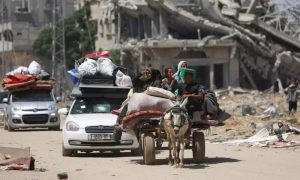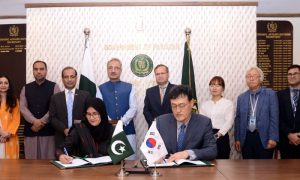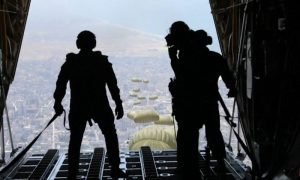ISLAMABAD: Under the official Doha accord 2021, departure of US soldiers from Afghanistan is marked as a significant turning point in the region’s complex history.
Although this departure was first seen as a step in the direction of stability, it has instead opened a Pandora’s box with unanticipated implications that go well beyond Afghanistan’s borders.
Once molded by the tides of military tactics, the geopolitical landscape is today marked by the remnants of a bloody past. It becomes clearer as we work our way through the maze of historical events that preceded this crucial turning point that the legacy of the Afghan conflict is a complicated story with disturbing and unanticipated repercussions. The consequences of this pullout have not only altered the political landscape in Afghanistan but have also impacted neighbouring countries, necessitating a comprehensive understanding of the complex interactions among regional actors.
When the dust cleared following the sudden U.S. pullout from Afghanistan, an unexpected sight appeared: an incredible $7 billion worth of military hardware was abandoned, unintentionally leaving a legacy to the same forces the U.S. had sought to subdue. With this arsenal of weapons, which included anything from guns to tanks, the Taliban became an unanticipated force to be reckoned with. The Taliban found themselves equipped with the remains of Western military might after strategically seizing this arsenal.
This unanticipated boon not only shifted the power dynamics within Afghanistan, but it also gave the Taliban increased clout in the international arena. The unintentional transfer of cutting-edge military hardware has fundamentally changed the dynamics of the area, forcing governments, surrounding countries, and international observers to deal with the unanticipated fallout from a military withdrawal that unintentionally spurred the revival of a once-insurgent group.
The aftermath of the upheaval in Afghanistan has not only affected neighbouring Pakistan but also other countries, with unanticipated implications emerging. After being ideologically linked with Afghanistan’s interim government, the Tehrik-e Taliban Pakistan (TTP) and Baloch separatist organizations found themselves suddenly endowed with a fresh military capability, thanks to the excess U.S. armament left behind. The unexpected armament has caused a concerning spike in bloodshed, which has fundamentally changed the dynamics of the insurgency in the area. Thus, Pakistan has seen the unintended effects of the U.S. departure, which have increased security concerns and heightened tensions in an already complicated geopolitical environment.
Tehrik-e Taliban Pakistan (TTP) and Baloch rebels have aligned goals, which has developed into a severe threat that jeopardies peace in the region. Working in a macabre duet, the two organizations have acquired cutting-edge U.S. weapons, which has helped them find common ground in their ideological goals. The region’s already precarious peace is seriously threatened by this unholy partnership. There are worries about the possibility of increasing bloodshed and destabilization due to the TTP and Baloch militants’ similar ideology and the extraordinary weaponry at their disposal. The gravity of the issue is shown by statistics data from the Pakistan Institute of Peace Studies, which shows a concerning trend in 2023, Pakistan experienced a 17% increase in terrorist violence, with three major groups, TTP, IS-K, and BLA, responsible for over 82% of terrorism-related deaths and 78% of total terrorist attacks. The infusion of advanced weaponry and the convergence of interests among various rebel organizations offer a significant problem that requires immediate attention and deliberate involvement to protect regional security. The ground reality differs from the Taliban’s strident denials that it is involved in the black-market trade or in providing weapons to the TTP. High-quality U.S. weaponry have overtaken Austrian-made Glock handguns, M-4 assault rifles, and communication gear on the illicit market, with costs to match.
A diplomatic tightrope needs to be walked in the aftermath of Pakistan and the Taliban’s worsening ties. The Taliban’s readiness to put foreign jihadists ahead of diplomatic recognition is indicative of a leadership that is less inward-looking and more concerned with global issues. Deciphering the Taliban’s commitment to keeping Afghan land from turning into a hub for terrorism is a difficult issue for policymakers.
The ongoing story of the aftermath of the Afghan conflict—which was sparked by the U.S. withdrawal—needs close attention. The future of a region in transition is being shaped by the echoes of chaos, whether they take the form of sophisticated weapons in the hands of rebels or the geopolitical dance between countries. The repercussions of this unravelling story are still being felt as we work through its intricacies, highlighting the need for strategic forethought, sophisticated diplomacy, and a dedication to long-term stability in the wake of the Afghan conflict.























